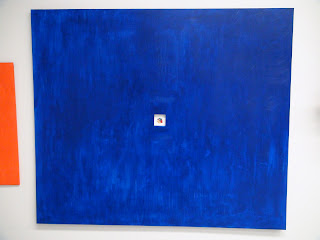PROMPT 2
It’s really interesting how Susan started with the quote of Wittgenstein “Our language can be seen as an ancient city: a maze of little streets and squares, of old and new houses with additions from various periods, and this surrounded by a multitude of new borough with straights regular streets and uniform house”. With my experience in linguistics, I realized that all languages have histories in terms of word appropriation and orthographic establishment (standardization). We speak language alright yet when we get to know the histories associated with it and how certain words were borrowed from other culture; it sort of adds some aesthetics to the language. Cities often give people a sense of nostalgia. Places where we used to have fun or enjoy, nolens volens gets transformed into something else. When we see such spaces, they remind us of the original space.
It’s really interesting how Susan started with the quote of Wittgenstein “Our language can be seen as an ancient city: a maze of little streets and squares, of old and new houses with additions from various periods, and this surrounded by a multitude of new borough with straights regular streets and uniform house”. With my experience in linguistics, I realized that all languages have histories in terms of word appropriation and orthographic establishment (standardization). We speak language alright yet when we get to know the histories associated with it and how certain words were borrowed from other culture; it sort of adds some aesthetics to the language. Cities often give people a sense of nostalgia. Places where we used to have fun or enjoy, nolens volens gets transformed into something else. When we see such spaces, they remind us of the original space.
 She added, “the suburbs present us with a negation of present;
a landscape consumed by its past and its future” ( Page 1) I’m trying to how synchronize
the elements of the street with art since these elements for instances signs
and symbols make one realize themselves of their presence within that space. I
think this also occurs to the reader of art in an exhibition space, especially
when she said “The reader becomes a character, a figure who looks for signs or
clues-not a reader of signs and clues that fit together into a moral puzzle
solved through the eschatology of closure but a reader of signs for their own
sake, a reader of correspondence between the signs of the world, the immediate
environment of everyday life, and the signs of the novel” (page 4)
She added, “the suburbs present us with a negation of present;
a landscape consumed by its past and its future” ( Page 1) I’m trying to how synchronize
the elements of the street with art since these elements for instances signs
and symbols make one realize themselves of their presence within that space. I
think this also occurs to the reader of art in an exhibition space, especially
when she said “The reader becomes a character, a figure who looks for signs or
clues-not a reader of signs and clues that fit together into a moral puzzle
solved through the eschatology of closure but a reader of signs for their own
sake, a reader of correspondence between the signs of the world, the immediate
environment of everyday life, and the signs of the novel” (page 4) 
































